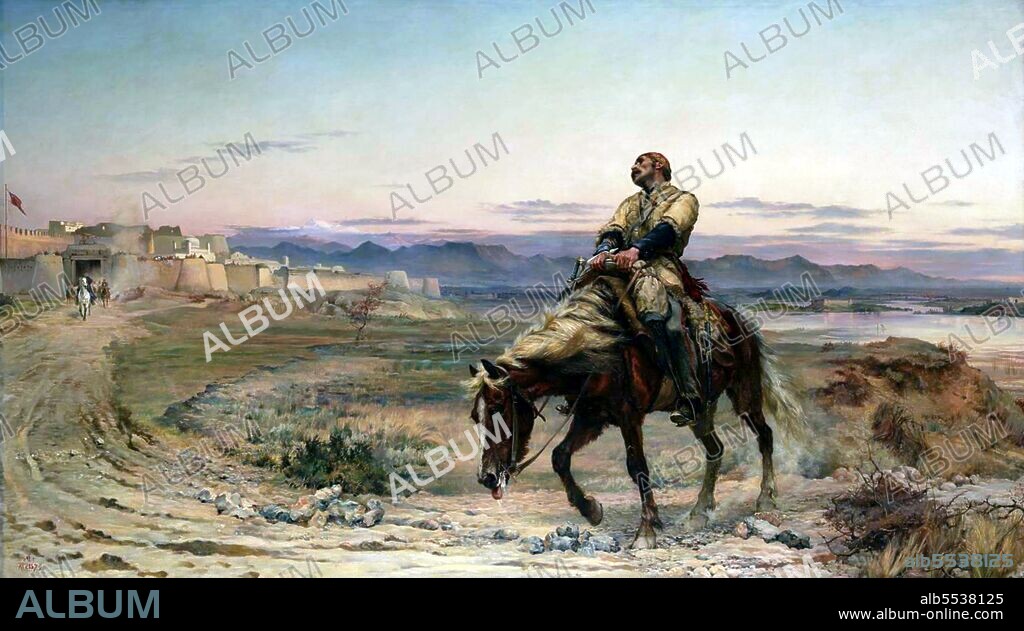alb5538125
Afghanistan: 'Remnants of an Army' by Elizabeth Butler portraying Dr William Brydon arriving at the gates of Jalalabad as the sole survivor of a 16,500 strong force evacuated from Kabul in January 1842

|
Zu einem anderen Lightbox hinzufügen |
|
Zu einem anderen Lightbox hinzufügen |



Haben Sie bereits ein Konto? Anmelden
Sie haben kein Konto? Registrieren
Dieses Bild kaufen.
Nutzung auswählen:

Titel:
Afghanistan: 'Remnants of an Army' by Elizabeth Butler portraying Dr William Brydon arriving at the gates of Jalalabad as the sole survivor of a 16,500 strong force evacuated from Kabul in January 1842
Untertitel:
Siehe automatische Übersetzung
William Brydon CB (10 October 1811 – 20 March 1873) was an assistant surgeon in the British East India Company Army during the First Anglo-Afghan War (1839-1842), famous for reportedly being the only member of an army of 4,500 men to reach safety in Jalalabad at the end of the long retreat from Kabul. The British Army began its retreat from Kabul in January 1842, following the killing of the two British representatives there. The nearest British garrison was in Jalalabad, 90 miles (140 km) away, and the army would need to go through mountain passes with the January snow hindering them. Under the command of Major-General William George Keith Elphinstone, 4,500 British and Indian soldiers plus 12,000 civilian camp followers including wives and children set out for Jalalabad on 6 January 1842, on the understanding that they had been offered safe passage. Afghan tribesmen intercepted them and proceeded to massacre them during the next seven days.
Bildnachweis:
Album / Pictures From History/Universal Images Group
Freigaben (Releases):
Bildgröße:
5100 x 2878 px | 42.0 MB
Druckgröße:
43.2 x 24.4 cm | 17.0 x 9.6 in (300 dpi)
Schlüsselwörter:
AFGHANISTAN • ASIEN • ASIEN, KONTINENT • GEMAELDE • GESCHICHTE • ISLAM • ISLAMISCH • KONTINENT, ASIEN • KUNST • MALEREI • MOHAMMEDANER • MOHAMMEDANERIN • MOSLEM • MOSLEMIN • MUSLIM • MUSLIMIN • ZEITGESCHICHTE
 Pinterest
Pinterest Twitter
Twitter Facebook
Facebook Link kopieren
Link kopieren Email
Email
